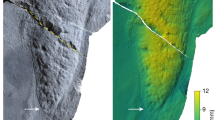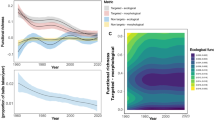Abstract
URINE is produced in the bivalve mollusc Anodonta by the filtration of blood plasma into the pericardium and the pericardial fluid so formed is directed into the renal organs by the cilia of the reno-pericardial funnels1. The output of urine from the external urinary pore was until recently considered to be caused by filtration pressure and ciliary action. Trueman2, however, confirms the hypothesis of Ramsay3 and Krijgsman and Divaris4 that a negative pressure tends to occur in the pericardium at systole and suggests that the suction produced favours auricular filling. This suction would also oppose the flow of urine through the renal organs. Using transducers to record pressures in the pericardium and haemocoel of various bivalves, Trueman2,5 has shown that there are considerable hydrostatic pressures corresponding to adduction of the shell and has established that there is a pressure gradient between the pericardium and the mantle cavity immediately after adduction. The possibility of these pressure gradients being involved in the mechanism of urine flow in Anodonta prompted this investigation.
This is a preview of subscription content, access via your institution
Access options
Subscribe to this journal
Receive 51 print issues and online access
$199.00 per year
only $3.90 per issue
Buy this article
- Purchase on Springer Link
- Instant access to full article PDF
Prices may be subject to local taxes which are calculated during checkout
Similar content being viewed by others
References
Martin, A. W., and Harrison, F. M., in Physiology of the Mollusca (edit. by Wilbur, K. M., and Yonge, C. M.), 2, 353 (Academic Press, New York, 1966).
Trueman, E. R., J. Exp. Biol., 45, 369 (1966).
Ramsay, J. A., in A Physiological Approach to the Lower Animals (Cambridge University Press, 1952).
Krijgsman, B. J., and Divaris, G. A., Biol. Rev., 30, 1 (1955).
Trueman, E. R., Proc. Roy. Soc., B, 166, 459 (1967).
Author information
Authors and Affiliations
Rights and permissions
About this article
Cite this article
HELM, M. Fluid Dynamics of Excretion in Anodonta. Nature 215, 543–545 (1967). https://doi.org/10.1038/215543a0
Received:
Published:
Issue Date:
DOI: https://doi.org/10.1038/215543a0
Comments
By submitting a comment you agree to abide by our Terms and Community Guidelines. If you find something abusive or that does not comply with our terms or guidelines please flag it as inappropriate.



